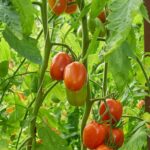Is it safe to use Molemax in vegetable gardens? Many gardeners are turning to Molemax as a solution to keep pests at bay and protect their precious vegetables. In this article, we will explore the safety and effectiveness of using Molemax in vegetable gardens.
Molemax is a popular product designed to repel pests from gardens, including vegetable gardens. It contains natural ingredients that are intended to deter unwanted animals such as moles, voles, gophers, and other burrowing rodents. The purpose of Molemax in vegetable gardens is to provide protection against these destructive pests, allowing for healthier and more abundant harvests.
Understanding the ingredients and workings of Molemax is essential to determine its safety and efficacy. By delving into the key components of Molemax and how they function to repel pests, gardeners can make informed decisions about whether or not to use this product in their vegetable gardens. Additionally, exploring the benefits of using Molemax in vegetable gardens will shed light on its potential advantages in protecting plants from damage caused by pests.
Understanding Molemax
Molemax is a popular product used in vegetable gardens to repel pests and protect plants from damage. It contains natural ingredients such as castor oil, which creates an unpleasant environment for pests like moles, voles, gophers, and other burrowing animals. The main purpose of Molemax is to deter these pests from destroying vegetable gardens without causing harm to the plants or the surrounding environment.
One of the key ingredients in Molemax is castor oil, which acts as an irritant to burrowing pests. When applied to the soil, it creates an odor and taste that these animals find repulsive, encouraging them to seek out alternative areas for foraging. This makes Molemax an effective solution for protecting vegetable gardens from underground pests without resorting to harmful chemicals or traps that can be detrimental to the ecosystem.
In addition to castor oil, some formulations of Molemax also contain other natural ingredients such as white pepper and garlic, which further enhance its ability to repel pests. These ingredients work together to create a protective barrier around the plants and discourage burrowing animals from causing damage. Understanding how these ingredients work is essential for gardeners who want a safe and effective method for pest control in their vegetable gardens.
| Ingredient | Effect |
|---|---|
| Castor Oil | Acts as an irritant to burrowing pests |
| White Pepper and Garlic | Enhances ability to repel pests |
Benefits of Using Molemax in Vegetable Gardens
Increased Plant Health and Yield
Using Molemax in vegetable gardens can provide numerous benefits, including the protection of plants from damage caused by various pests. By creating a barrier that repels pests, Molemax helps to safeguard the health and vitality of the plants, which can ultimately lead to increased yield. With reduced pest-related damage, plants are able to thrive and produce a greater quantity of high-quality vegetables.
Natural Pest Control
One of the key advantages of using Molemax in vegetable gardens is its natural approach to pest control. Unlike chemical pesticides, Molemax utilizes natural ingredients to deter pests without harming the environment or beneficial insects. This makes it an eco-friendly option for gardeners who prioritize sustainability and want to minimize their impact on the surrounding ecosystem.
Long-Lasting Protection
Molemax provides long-lasting protection against a variety of pests, including moles, voles, gophers, armadillos, and other burrowing animals that can wreak havoc on vegetable gardens. Its effectiveness in deterring these pests can alleviate the need for constant vigilance and frequent reapplication of other pest control methods.
By leveraging these benefits, Molemax offers an effective and safe way to protect vegetable gardens from potential damage caused by pests. However, it is important for gardeners to consider any associated risks and concerns before implementing this product in their gardens.
Risks and Concerns
Molemax is a popular product used in vegetable gardens to repel pests and protect plants from damage. While it can be effective in deterring unwanted critters, there are potential safety risks associated with its use. It is important for gardeners to understand these concerns before applying Molemax in their gardens.
One of the main ingredients in Molemax is castor oil, which is known to repel pests such as moles, voles, and gophers. However, there are some potential risks associated with using castor oil-based products in vegetable gardens.
Here are some safety risks and concerns to consider when using Molemax in vegetable gardens:
- Skin irritation: Direct contact with Molemax or its concentrated form can cause skin irritation. It is important to wear gloves and long-sleeved clothing when handling this product.
- Eye irritation: Avoid getting Molemax in your eyes as it can cause irritation. Use protective eyewear if necessary.
- Ingestion risk: Keep Molemax away from children and pets, as ingestion of this product can cause nausea, vomiting, and diarrhea.
While these risks should be taken seriously, there are ways to minimize them by following proper application guidelines and safety precautions. Always read the label and follow the instructions provided by the manufacturer when using Molemax in your vegetable garden. If you have any concerns about using this product, it is recommended to consult with a professional before application.
Environmental Impact
When considering the use of Molemax in vegetable gardens, it’s important to examine its potential impact on the surrounding ecosystem. The ingredients in Molemax, such as castor oil and garlic, are natural deterrents for pests like moles, voles, gophers, and armadillos. While these ingredients are considered safe for use in gardens, there are some factors to consider regarding their environmental impact.
Here are some key points to consider about the environmental impact of using Molemax in vegetable gardens:
- Biodegradability: One of the benefits of using Molemax is that it is biodegradable. This means that it will break down over time without causing harm to the soil or water sources.
- Non-toxicity to non-target species: Molemax is designed to repel specific pests without harming other creatures. This makes it a more environmentally friendly option compared to chemical pesticides that can have broader and more harmful effects on the ecosystem.
- Soil health: While Molemax is generally safe for soil health, excessive use or misuse can potentially affect the microbial balance in the soil. It’s essential to follow application guidelines carefully to minimize any negative impact on soil biology.
Application Guidelines
Molemax is a popular product used in vegetable gardens to repel pests and protect plants from damage. When used correctly, Molemax can be an effective and safe way to ensure the health and vitality of your garden. Below are some step-by-step guidelines on how to use Molemax in vegetable gardens safely.
1. Preparation: Before applying Molemax to your vegetable garden, it’s important to prepare the area by removing any weeds or debris. This will allow the product to be more effective in repelling pests and protecting your plants.
2. Application: Once the area is prepared, carefully sprinkle Molemax around the perimeter of your vegetable garden and around individual plants. Be sure to follow the instructions on the product label for specific application rates and methods.
3. Watering: After applying Molemax, lightly water the treated area to help activate the product and ensure that it settles into the soil properly. This will also help distribute the ingredients throughout the garden for maximum effectiveness.
It’s important to note that while Molemax can be a useful tool for protecting vegetable gardens, it’s essential to always follow the manufacturer’s guidelines for safe and proper use. Using more than the recommended amount of Molemax can potentially harm both your plants and the surrounding environment, so it’s crucial to use this product responsibly.
| Application Guidelines | Step-by-Step Instructions |
|---|---|
| Preparation | Remove weeds and debris from the area |
| Application | Sprinkle Molemax around perimeter of garden and individual plants |
| Watering | Lightly water treated area after application |
Alternative Methods
Companion Planting
One popular alternative method to using Molemax in vegetable gardens is companion planting, which involves planting certain crops together to naturally repel pests or attract beneficial insects. For example, planting marigolds alongside tomato plants can help deter nematodes and other pests. Similarly, planting basil near your tomatoes can help ward off thrips and aphids. By strategically planning your vegetable garden layout, you can create a natural pest management system without the use of chemicals.
Organic Sprays and Solutions
Another effective alternative to Molemax is the use of organic sprays and solutions that can be made at home or purchased from gardening stores. These solutions often utilize natural ingredients like garlic, hot peppers, neem oil, or diatomaceous earth to repel or kill garden pests. Organic sprays are safe for use in vegetable gardens and can provide an effective means of pest control without harmful chemicals.
Natural Predators
Introducing natural predators into the garden environment can also help control pest populations without resorting to chemical interventions. For example, encouraging the presence of ladybugs, lacewings, praying mantises, or birds can help keep pest populations in check by preying on them. Creating a welcoming habitat for these natural predators by providing appropriate food sources and shelter can contribute to a healthy balance in the garden ecosystem.
By exploring these alternative methods, gardeners have the option to protect their vegetable gardens from pests in a natural and chemical-free way. Each method has its own advantages and considerations, so it’s important to evaluate which approach best suits the specific needs of your garden while maintaining an environmentally friendly gardening practice.
Conclusion
In conclusion, Molemax can be a beneficial tool in protecting vegetable gardens from pests and minimizing damage to plants. The ingredients in Molemax work to repel unwanted animals and insects without harming the plants or the surrounding environment. By following the application guidelines and using it as directed, gardeners can safely incorporate Molemax into their gardening routine.
While there are potential safety risks associated with using Molemax in vegetable gardens, such as accidental ingestion by humans or pets, these risks can be minimized by carefully following the instructions and taking appropriate precautions. It is also important for gardeners to consider the environmental impact of using Molemax and to weigh its benefits against any potential harm to non-target species.
Ultimately, when used responsibly and in conjunction with alternative natural pest control methods, Molemax can be a safe and effective option for protecting vegetable gardens. However, it is important for gardeners to weigh the benefits and risks, consider alternative methods, and make an informed decision based on their specific gardening needs and values. Overall, while Molemax can be a valuable tool for pest control in vegetable gardens, it is essential to use it cautiously and conscientiously.
Frequently Asked Questions
Can I Use MoleMax in My Vegetable Garden?
MoleMax can typically be used in a vegetable garden as it is considered safe for use around edible plants. However, it’s important to carefully read the product label and follow any specific instructions or restrictions related to vegetable gardens. As a precaution, it’s a good idea to avoid direct contact with the vegetables themselves when applying MoleMax.
Does MoleMax Need to Be Watered In?
Yes, MoleMax often needs to be watered in after application. This helps to activate the product and ensure that it penetrates into the soil where it can effectively deter moles and other pests. Be sure to follow the instructions on the product label regarding how much water is needed and when to apply it after spreading MoleMax.
When Should I Spread MoleMax?
The timing for spreading MoleMax can depend on various factors such as the specific pest problem you are targeting and the time of year. In general, it’s best to apply MoleMax at the first sign of mole or rodent activity or as a preventive measure before these pests become a problem.
It’s also important to check the product label for any specific guidelines on timing and frequency of applications.

If you’re looking to get into vegetable gardening, or are just looking for some tips on how to make your current garden better, then you’ve come to the right place! My name is Ethel and I have been gardening for years. In this blog, I’m going to share with you some of my best tips on how to create a successful vegetable garden.





